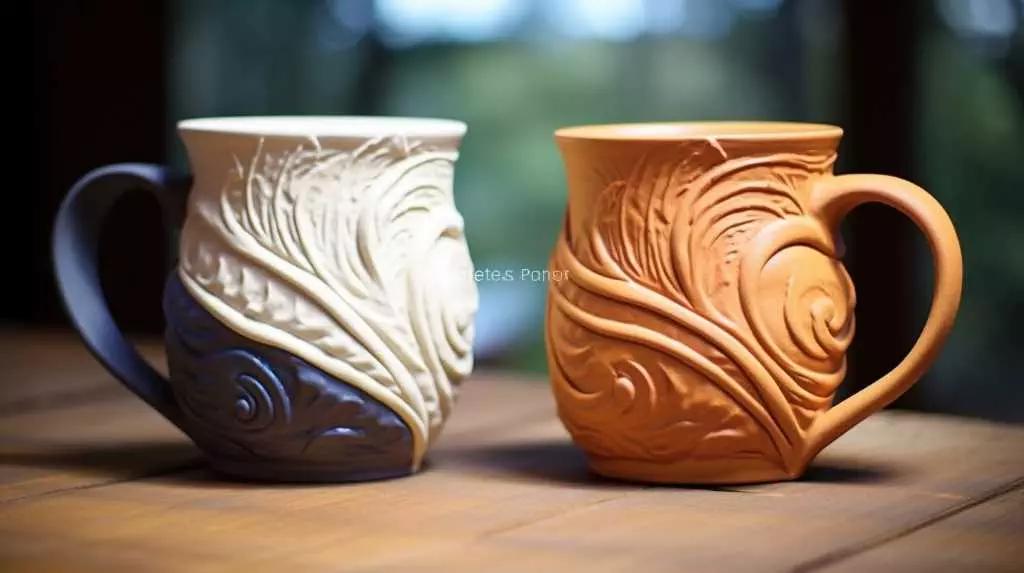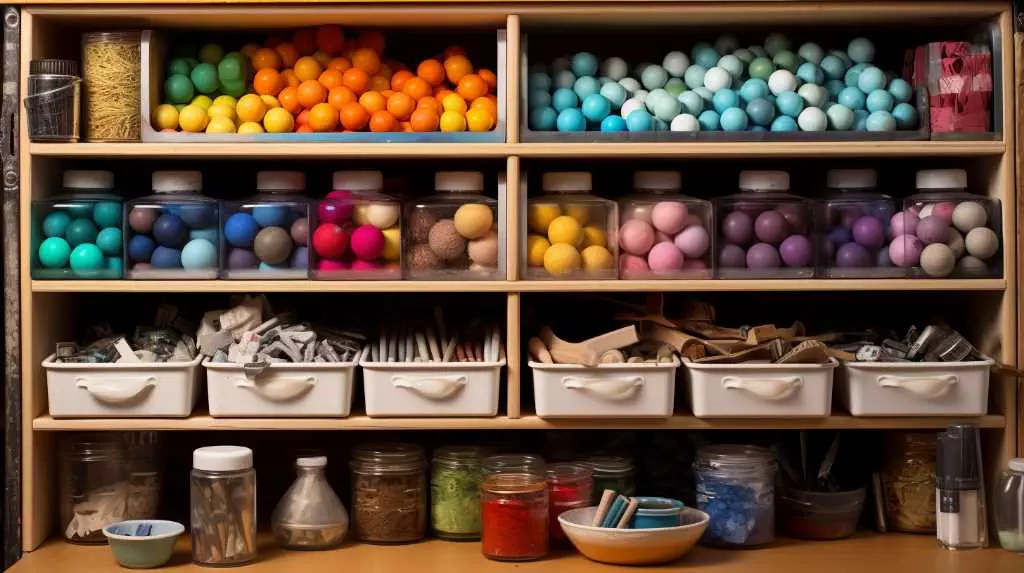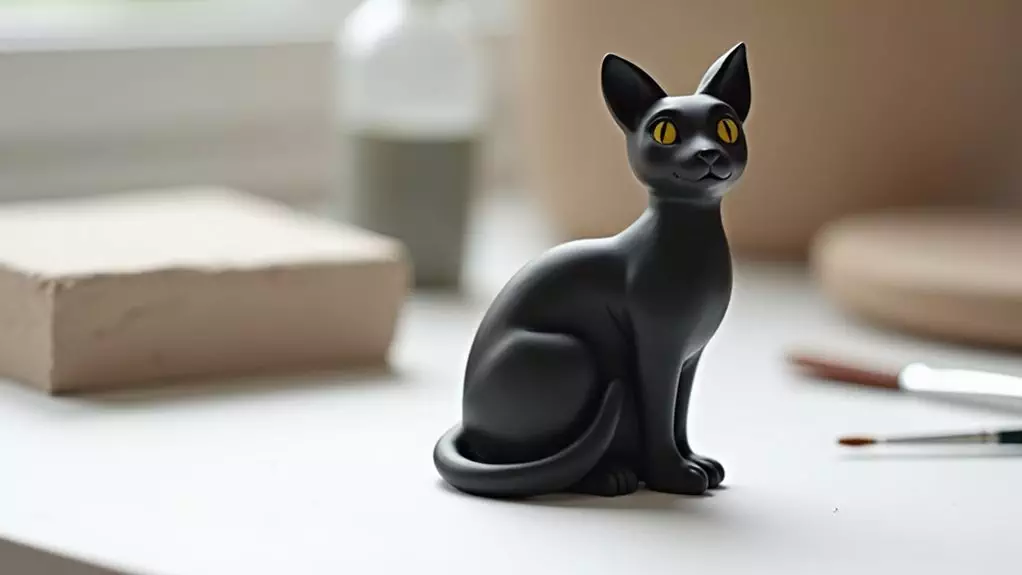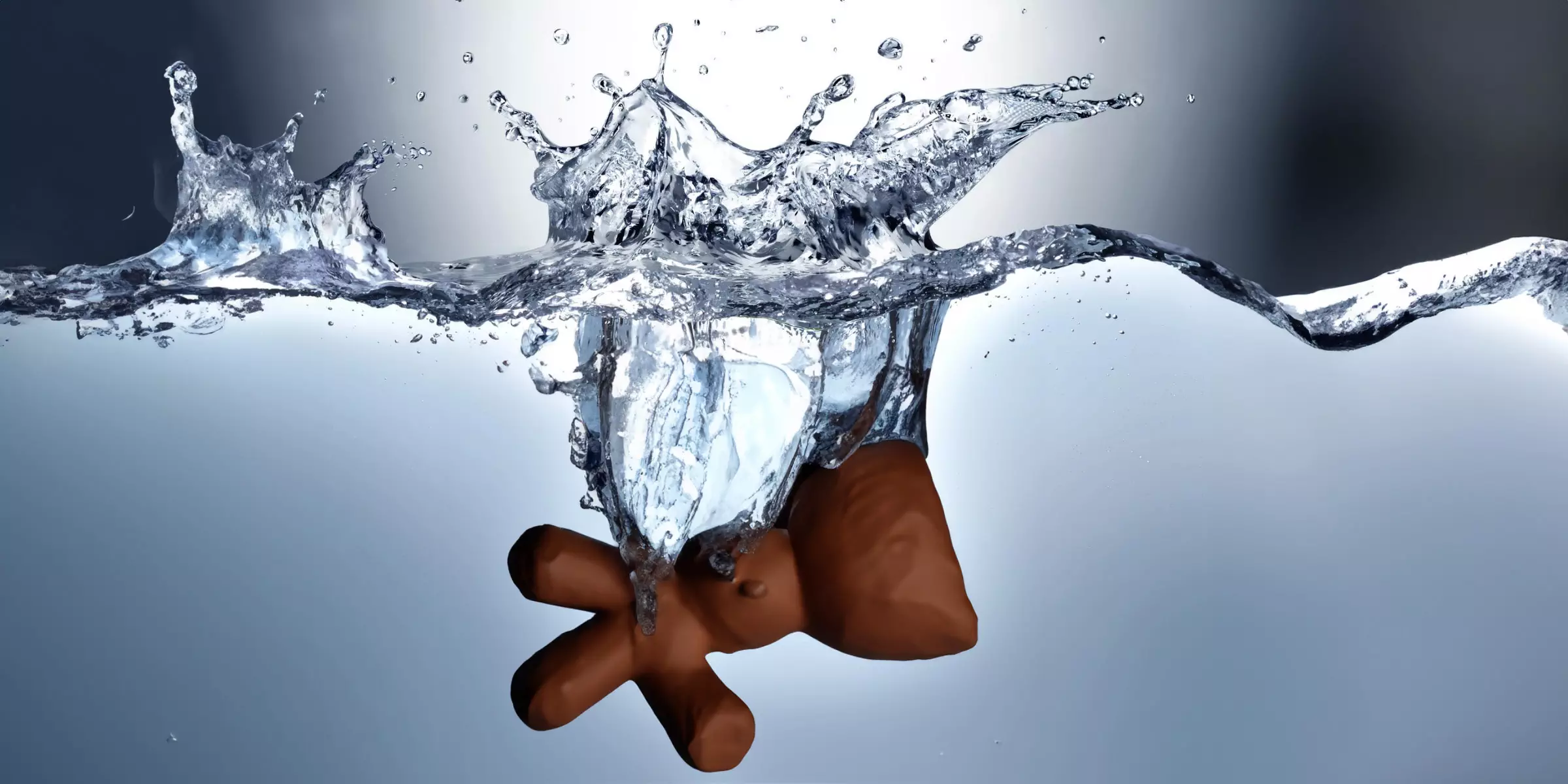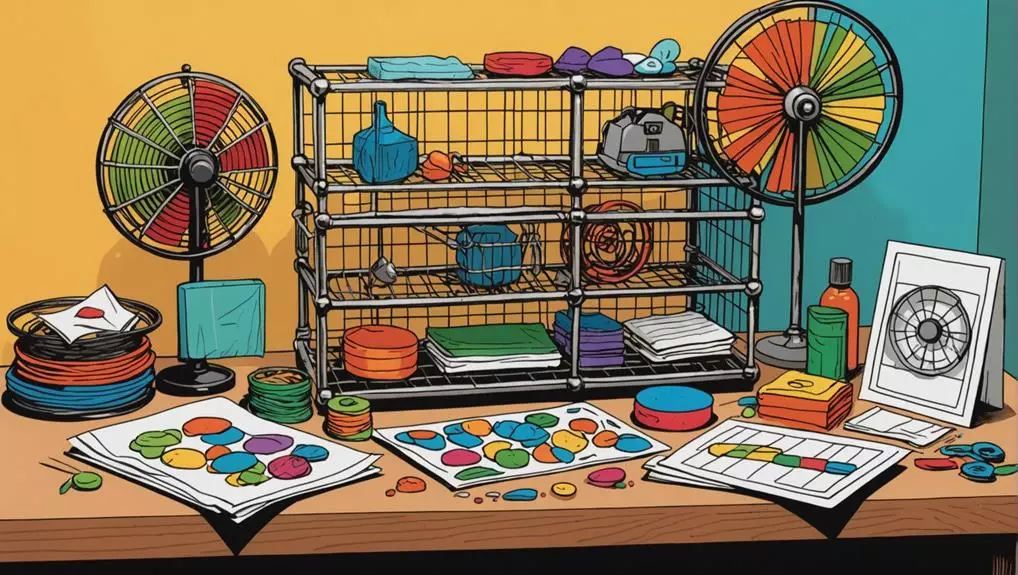Are you a parent wondering if air dry clay is safe for your kids? Well, you’ve come to the right place! In this article, we will explore the non-toxicity of air dry clay, age recommendations, safety tips, and the benefits it offers.
We’ll also address common concerns and provide alternatives if you’re looking for different options. So, sit back, relax, and let’s dive into the world of air dry clay and find out if it’s the perfect creative outlet for your little ones!
Non-toxicity
Air dry clay is considered safe for kids as it’s non-toxic. This means that children can enjoy the creative process without the worry of harmful chemicals.
When it comes to child-friendly art materials, health concerns are always a top priority. Air dry clay is made from natural ingredients such as water, clay minerals, and a binder like cellulose or starch. These ingredients are carefully chosen to ensure that the clay is safe for children to handle and manipulate.
Unlike some other types of clay, air dry clay doesn’t contain harmful substances like lead or asbestos. This makes it a great choice for parents who want to provide their children with a safe and enjoyable artistic experience.
Age Recommendations
When choosing air dry clay for your child, consider their age and developmental stage.
Age recommendations play a crucial role in ensuring the safety of your child when working with air dry clay. Here are three key factors to consider:
- Safety regulations: Different brands of air dry clay may have specific age recommendations due to safety regulations. These guidelines are in place to protect children from potential hazards associated with certain materials or techniques. Always check the packaging or product information to ensure you’re selecting a clay that’s suitable for your child’s age.
- Developmental stage: Consider your child’s developmental stage when choosing air dry clay. Younger children may not have the fine motor skills required for intricate clay work, while older children may be ready for more advanced projects. It’s important to choose clay that matches your child’s abilities to prevent frustration or accidents.
- Suitable materials: Some air dry clays may contain small parts or potential allergens, making them unsuitable for younger children. Additionally, certain types of clay may require adult supervision or specialized tools. Be sure to choose a clay that’s appropriate for your child’s age and skill level to ensure a safe and enjoyable experience.
Safety Tips
When considering the safety of your child when working with air dry clay, there are some important tips to keep in mind.
First and foremost, it’s essential to be aware of any potential allergies your child may have. Air dry clay contains certain ingredients that can cause allergic reactions in some individuals. Before using the clay, make sure to check for any signs of irritation or sensitivity by performing a small patch test on your child’s skin.
Additionally, always supervise your child while they’re using air dry clay to prevent them from ingesting it or putting it in their eyes, nose, or mouth. Although air dry clay is generally non-toxic, it isn’t meant to be consumed.
Lastly, ensure that your child washes their hands thoroughly after using the clay to avoid any potential hazards or skin irritations.
Supervision
When it comes to working with air dry clay, adult supervision is crucial.
It’s important to closely monitor children while they’re using this material to ensure their safety.
Adult Supervision Required
To ensure the safety of children while using air dry clay, it’s essential that adult supervision be provided throughout the entire process. Here are three reasons why adult supervision is crucial when children are working with air dry clay:
- Age appropriateness: While air dry clay is generally safe for kids, younger children may have a harder time handling it properly. Adults can guide them in using the clay safely and prevent any accidents or misuse.
- Potential hazards: Air dry clay can pose potential hazards if not used correctly. Adults can ensure that children are using the clay in a well-ventilated area to avoid inhaling dust particles. They can also make sure that children aren’t putting the clay in their mouths or eyes, reducing the risk of ingestion or irritation.
- Assistance and guidance: Adult supervision allows for immediate assistance and guidance if any issues arise. Whether it’s helping children with certain techniques or addressing any concerns, having an adult present ensures a safer and more enjoyable experience for kids.
Safety Precautions for Supervision
Ensure the safety of your children while working with air dry clay by implementing proper safety precautions and providing continuous adult supervision. Supervision is crucial to prevent accidents and ensure that children use the clay safely.
Here are some supervision guidelines to follow:
- Always supervise children when they’re working with air dry clay.
- Make sure the work area is well-ventilated and clean.
- Keep small children away from the clay to prevent ingestion.
- Teach children not to put the clay in their mouths and to wash their hands after use.
- Instruct children to avoid touching their eyes, mouth, or face while working with the clay.
- Store the clay in a safe place out of reach of children when not in use.
- Check the clay for any potential hazards such as sharp edges or small pieces before allowing children to use it.
Ensuring Child’s Well-Being
Supervising your child while they work with air dry clay is essential for their well-being. Not only does it ensure their safety, but it also allows you to support their creative exploration and foster their development. Here are three important reasons why you should always supervise your child when they’re using air dry clay:
- Safety: While air dry clay is generally safe for kids, it’s important to ensure that they’re using it properly and following any instructions or guidelines provided. By supervising their activities, you can prevent any accidents or mishaps.
- Guidance: Supervision allows you to provide guidance and assistance when needed. You can teach them different techniques, help them with shaping or molding, and encourage their creativity. This hands-on approach can greatly enhance their learning experience.
- Emotional support: Being present while your child works with air dry clay creates a sense of security and comfort. It allows them to express themselves freely and provides an opportunity for bonding. Your presence and encouragement can boost their confidence and self-esteem.
Benefits of Air Dry Clay
Using air dry clay has several benefits for your children.
Not only does it provide them with a fun and engaging activity, but it also allows for creative expression.
Air dry clay projects give children the freedom to mold and shape their ideas into tangible forms. This process encourages their imagination to flourish and helps develop their fine motor skills.
Additionally, working with air dry clay can be a therapeutic experience, providing a sense of relaxation and stress relief for children. It also promotes problem-solving skills as they learn to manipulate the clay and overcome challenges.
Moreover, air dry clay is a safe and non-toxic material, making it suitable for children of all ages.
Common Concerns
If you’re a parent, you may occasionally have concerns about the safety of air dry clay for your kids. While air dry clay is generally considered safe, it’s important to be aware of potential hazards and take necessary safety measures.
Here are three common concerns to keep in mind:
- Allergies: Some children may have allergies to certain ingredients in air dry clay, such as wheat or cornstarch. Before allowing your child to play with air dry clay, check the packaging for any potential allergens and consult with a pediatrician if needed.
- Choking hazard: Air dry clay can be soft and pliable, but it should never be ingested. Make sure to supervise your child while they play with clay to prevent any accidental ingestion. It’s also important to keep small clay pieces or accessories out of reach of younger children.
- Skin irritation: While air dry clay is generally safe for skin contact, some children may develop skin irritation or allergic reactions. To minimize the risk, encourage your child to wash their hands before and after playing with clay. If any irritation occurs, discontinue use and consult with a healthcare professional.
Alternatives to Air Dry Clay
You can explore other options instead of relying solely on air dry clay.
There are several air dry clay alternatives available that offer unique benefits for kids. One popular alternative is polymer clay, which is easy to mold and can be baked to harden. It’s also available in a wide range of colors, allowing for more creative possibilities.
Another option is salt dough, which is made from simple ingredients like flour, salt, and water. It’s safe for kids to use and can be baked or air-dried.
Playdough is another great alternative, as it’s easy to shape and comes in various colors. It can also be stored and reused multiple times.
These alternative materials provide a safe and enjoyable experience for kids while allowing them to explore their creativity.
Recommended Air Dry Clay Brands
To ensure a safe and enjoyable experience for your kids, consider using reputable air dry clay brands. Here are three recommended brands that have been trusted by parents and loved by children for their quality and safety:
- Crayola Air Dry Clay: Crayola, a well-known brand in the art and craft industry, offers air dry clay that’s non-toxic and easy to use. It provides a smooth texture and dries to a durable finish, making it perfect for creating sculptures and other clay projects.
- Amaco Air Dry Clay: Amaco is another trusted brand that produces high-quality air dry clay. Their clay is non-toxic, soft, and pliable, making it easy for kids to mold and shape. It also dries to a strong and sturdy finish, ensuring that your child’s creations will last.
- DAS Air Dry Clay: DAS is a popular choice among parents and educators. Their clay is non-toxic, lightweight, and soft, making it ideal for younger children. It also has a smooth texture and dries to a hard finish, allowing for intricate detailing and painting.
Using these recommended brands not only ensures the safety of your children but also allows them to enjoy the benefits of clay modeling, such as improving fine motor skills, fostering creativity, and providing a sensory experience.
Conclusion
In conclusion, air dry clay is a safe and fun material for kids to use. It’s non-toxic and suitable for various age groups, with proper supervision. By following safety tips and guidelines, parents can ensure a safe and enjoyable experience for their children.
Air dry clay offers numerous benefits, such as creativity and fine motor skill development. So, let your little ones explore their imagination with air dry clay, as the saying goes, ‘Creativity is intelligence having fun.’



